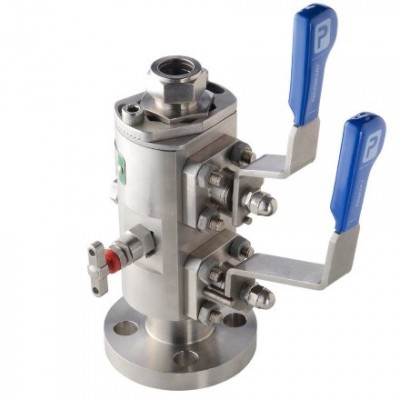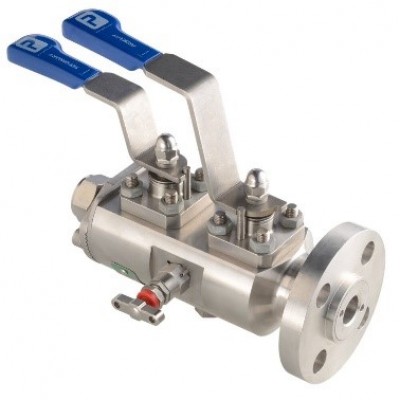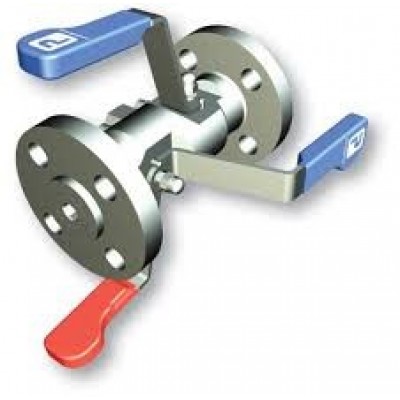
Login or create an account
CloseReturning Customer
I am a returning customer
Login or create an account
CloseRegister Account
If you already have an account with us, please login at the login form.
Your Account Has Been Created!
Thank you for registering with Welcome to Supertechnical!
You will be notified by e-mail once your account has been activated by the store owner.
If you have ANY questions about the operation of this online shop, please contact the store owner.
Account Logout
You have been logged off your account. It is now safe to leave the computer.
Your shopping cart has been saved, the items inside it will be restored whenever you log back into your account.
Probloc -Block & Bleed Valves
Modular Valve - ProBloc Series
Parker's ProBloc series is designed to replace conventional
multiple-valve installations currently in use for interface with pressure
measuring systems in process control applications.
Product Overview
Parker’s ProBloc series modular valves are
designed to replace conventional multiple-valve installations currently in use
for interfacing with pressure measuring systems. The traditional way of
creating a double block and bleed valve was to use three separate single
isolate ball valves, a tee piece to join them together and a flanged weldolet
to connect to the process pipeline. This was modified to bolt three valves
together using through bolts and was referred to as a modular valve.
No supporting is needed as the modular valve
is small and light compared to the
original method, It is easier to operate as the three valves are much closer
together. By building three valves into one body to create double block and
bleed valve you reduce the amount of potential leak paths, reduce the weight
which is critical in offshore facilities, reduce the size and therefore the
space taken up, very important offshore but also in onshore applications.
By combining customer-specified ball and needle
valves into a single manifold, Parker’s ProBloc modular valves significantly
reduce the number of potential leak paths. They also have a lower system mass.
This reduces loading and vibration stresses, further improving safety and
reliability.
Parker’s ProBloc valves are available in a range
of configurations, including double-block, block-and-bleed, and
block-bleed-block. Standard flange sizes include 1/2", 3/4", 1”,
1-1/2”, 2” and 3”. There are extensive choice of flange classes, from ANSI 150
to 2500. The pressure rating and operating temperature range depend on the type
of valves specified by the customer.
There is a choice of 10, 15, 20 and 25 mm ball
valve bore sizes. The standard outlet has a female NPT connection and matches
the size of the valve bore. A wide range of alternative metric sizes, from 6 to
25 mm, and imperial sizes, from 1/4" to 1” is available, and other
connection options include male NPT, and Parker CPI© single ferrule and A-LOK™
double ferrule compression fittings.
Markets:
• Oil and Gas Offshore
• Oil and Gas Onshore
• Petrochemical
• Chemical
Features/Benefits:
• Reduced leak paths
• Less weight and space required
• No welded joints
• No support required
• Ease of operation
• In situ calibration
• Simple design
• One piece forged construction
• API and DIN standard versions
• Reduced installation costs
• Corrosion resistant alloys
Applications:
• Instrument isolation
• Inline process isolation
Performance
Characteristics
|
Bore
Diameter |
20,
15, 10, 25, N/A mm |
|
Materials
of Construction |
316
Stainless Steel, Carbon Steel, Duplex |
|
Valve
Configuration |
Flange
x Screw |
|
Configuration |
Ball-Needle-Ball
|
|
Flange
Size |
1/2,
3/4, 1, 1-1/2, 2 inch |
|
Flange
Face Type |
Raised
Face Spiral, Ring Type Joint |
|
ANSI
Flange Class |
150,
300, 600, 900, 1500, 2500 |
|
Connection
Size |
N/A,
3/4 (NPT F), 1/2 (NPT F), 1 (NPT F) inch |
|
Seat
Material |
PEEK,
PTFE, PHLEX |
|
Handle
Type |
Stainless
Steel Lever |
|
Specifications
Met |
NACE,
Fire Safe API 6A, API 607, PRL 2, PSL 2, PSL 3, PSL 4, TAMAP, MESC SPE 77/312
|
|
Maximum
Operating Pressure |
275,
720, 1440, 2160, 3600, 6000, 285, 740, 1480, 2220, 3705, 6170, 290, 750,
1500, 2250, 3750, 6250 psi 19,
50, 99, 149, 248, 414, 20, 51, 102, 153, 256, 426, 52, 103, 155, 259, 431 bar
|
|
Maximum
Operating Temperature |
232,
204 °C 450,
400 °F |
|
Minimum
Operating Temperature |
-29
°C -20
°F |
|
Industry
Application |
Instrument
Isolation, In Situ Calibration, Inline Process Isolation, Chemical Injection,
Process Sampling |
Modular Valve - ProBloc Series
Parker's ProBloc series is designed to replace conventional
multiple-valve installations currently in use for interface with pressure
measuring systems in process control applications.
Product Overview
Parker’s ProBloc series modular valves are
designed to replace conventional multiple-valve installations currently in use
for interfacing with pressure measuring systems. The traditional way of
creating a double block and bleed valve was to use three separate single
isolate ball valves, a tee piece to join them together and a flanged weldolet
to connect to the process pipeline. This was modified to bolt three valves
together using through bolts and was referred to as a modular valve.
No supporting is needed as the modular valve
is small and light compared to the
original method, It is easier to operate as the three valves are much closer
together. By building three valves into one body to create double block and
bleed valve you reduce the amount of potential leak paths, reduce the weight
which is critical in offshore facilities, reduce the size and therefore the
space taken up, very important offshore but also in onshore applications.
By combining customer-specified ball and needle
valves into a single manifold, Parker’s ProBloc modular valves significantly
reduce the number of potential leak paths. They also have a lower system mass.
This reduces loading and vibration stresses, further improving safety and
reliability.
Parker’s ProBloc valves are available in a range
of configurations, including double-block, block-and-bleed, and
block-bleed-block. Standard flange sizes include 1/2", 3/4", 1”,
1-1/2”, 2” and 3”. There are extensive choice of flange classes, from ANSI 150
to 2500. The pressure rating and operating temperature range depend on the type
of valves specified by the customer.
There is a choice of 10, 15, 20 and 25 mm ball
valve bore sizes. The standard outlet has a female NPT connection and matches
the size of the valve bore. A wide range of alternative metric sizes, from 6 to
25 mm, and imperial sizes, from 1/4" to 1” is available, and other
connection options include male NPT, and Parker CPI© single ferrule and A-LOK™
double ferrule compression fittings.
Markets:
• Oil and Gas Offshore
• Oil and Gas Onshore
• Petrochemical
• Chemical
Features/Benefits:
• Reduced leak paths
• Less weight and space required
• No welded joints
• No support required
• Ease of operation
• In situ calibration
• Simple design
• One piece forged construction
• API and DIN standard versions
• Reduced installation costs
• Corrosion resistant alloys
Applications:
• Instrument isolation
• Inline process isolation
Performance
Characteristics
|
Bore
Diameter |
20,
15, 10, 25, N/A mm |
|
Materials
of Construction |
316
Stainless Steel, Carbon Steel, Duplex |
|
Valve
Configuration |
Flange
x Screw |
|
Configuration |
Ball-Needle-Ball
|
|
Flange
Size |
1/2,
3/4, 1, 1-1/2, 2 inch |
|
Flange
Face Type |
Raised
Face Spiral, Ring Type Joint |
|
ANSI
Flange Class |
150,
300, 600, 900, 1500, 2500 |
|
Connection
Size |
N/A,
3/4 (NPT F), 1/2 (NPT F), 1 (NPT F) inch |
|
Seat
Material |
PEEK,
PTFE, PHLEX |
|
Handle
Type |
Stainless
Steel Lever |
|
Specifications
Met |
NACE,
Fire Safe API 6A, API 607, PRL 2, PSL 2, PSL 3, PSL 4, TAMAP, MESC SPE 77/312
|
|
Maximum
Operating Pressure |
275,
720, 1440, 2160, 3600, 6000, 285, 740, 1480, 2220, 3705, 6170, 290, 750,
1500, 2250, 3750, 6250 psi 19,
50, 99, 149, 248, 414, 20, 51, 102, 153, 256, 426, 52, 103, 155, 259, 431 bar
|
|
Maximum
Operating Temperature |
232,
204 °C 450,
400 °F |
|
Minimum
Operating Temperature |
-29
°C -20
°F |
|
Industry
Application |
Instrument
Isolation, In Situ Calibration, Inline Process Isolation, Chemical Injection,
Process Sampling |





